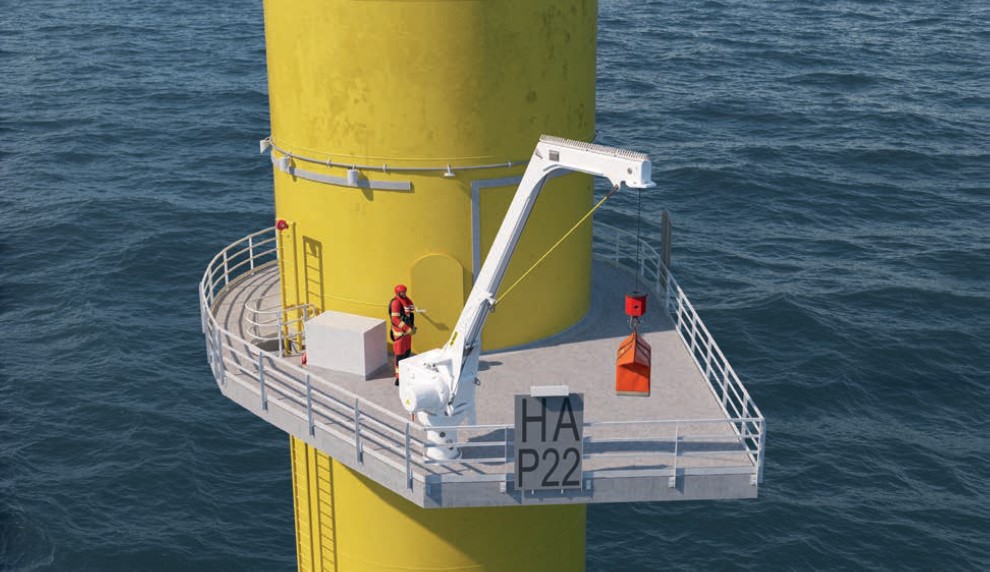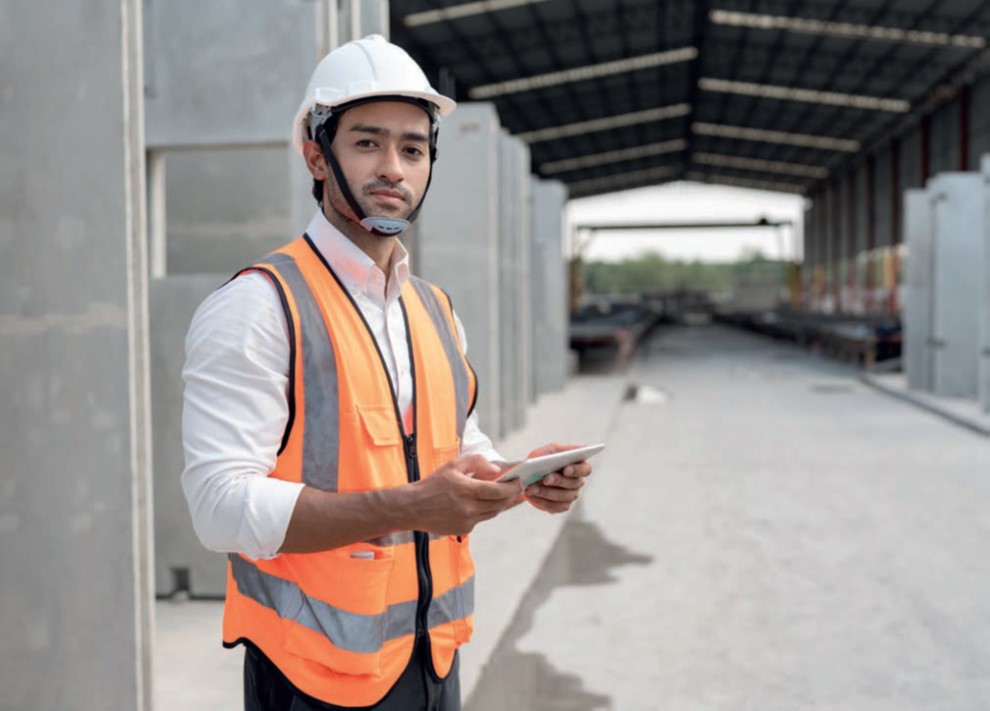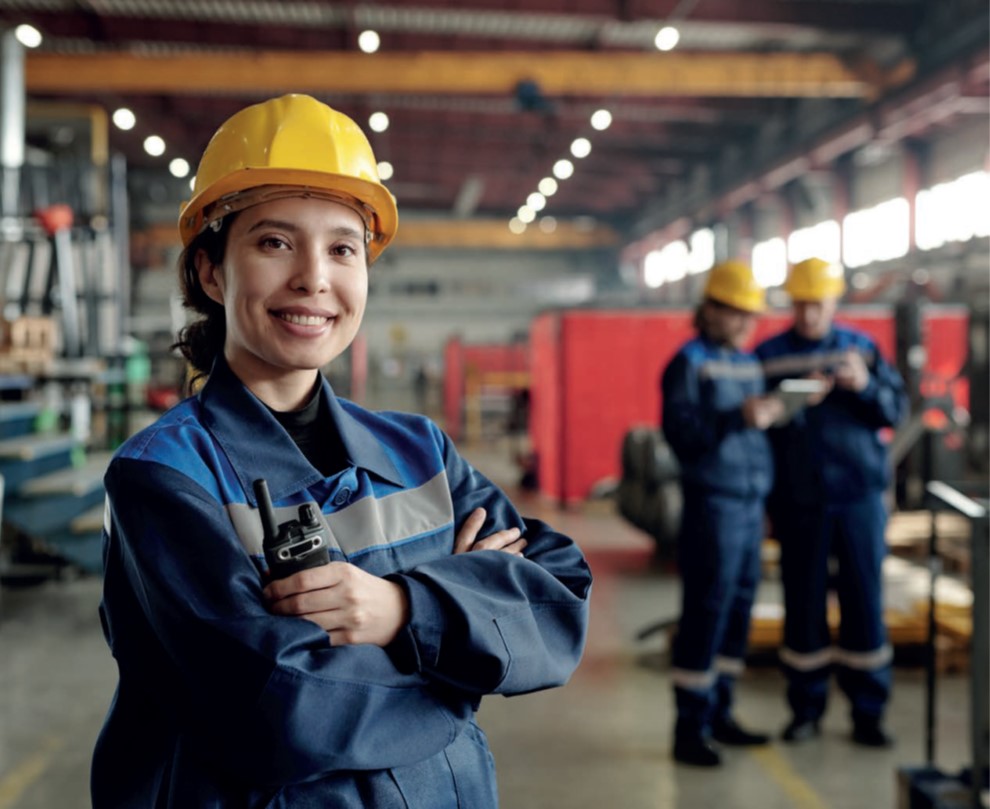Overhead cranes: The state of play in Asia
14 September 2023Julian Champkin reports on the factors affecting the nations in Asia’s lifting market.
Asia comprises 48 countries and some 30% of the world’s landmass, and stretches from Afghanistan to Japan and the Philippines, taking in India and China along the way. China is the world’s second-largest economy, after the US; Japan is at number three; and India, currently at number five, is forecast to overtake both Japan and Germany to take the number three spot by 2030. India was also projected to have overtaken China as the world’s most populous country in April of this year, while multinational investment bank Morgan Stanley estimates that the nation’s GDP is likely to more than double from current levels by 2031.
So we are talking very large amounts of people, activity and industry here – industry that will require very large amounts of lifting equipment to make it work. Some of that lifting gear will be homegrown; some will be imported.
CHINA AND INDIA
Greg Dow is Asia-Pacific business manager for UK-based Street Crane, which has a large footprint in the region. He is therefore well-placed to talk us through the current state of the Asian market.
“[Asia] has various markets within it. The main ones would be China and India. They almost act as a see-saw,” he begins. “With Covid, China got hurt with the shutting down of its ports and through the lockdown they had once the rest of the world was coming out of it; and that, I think, caused a big uplift in the Indian market. Activity in a way bounced between the two.”
Post-Covid turn-down or not, China is still a huge market. “What we have on our side, as a European OEM [original equipment manufacturer] exporting to those markets,” says Dow, “is that although they have their own Chinese product standards, and Chinese or Asian products that fit those standards, there is still a great demand for European products within the Asian market. That is especially so in Malaysia and that Southeast Asia region.
“India, too, is looking to be a massive market experience, especially for European products. India is currently doing very well,” says Dow. “I think there’s some good potential in Vietnam. Hong Kong seems to be picking up a bit. It obviously forms part of China, but China has many different [areas] with different economic cycles.”
One help for those exports, he says, is Western investments in the East. “Those regions do get a lot of investment from Western companies, and when Western companies invest they want Western products making their product.
“If in China it is an internal, Chinese, investment then they will take Chinese lifting gear, and if it is a Western investment then they want Western cranes and hoists within their factories. So the source of the lifting product goes with the source of the investment.”
There is another factor: though China is seen as a source of equipment, European products are still seen as prestigious.
“China is obviously known as an export hub of the world, able to source, make and export almost anything,” says Dow. “So what Chinese companies can tend to do is source Western product and resell it onwards, to China or elsewhere in Asia, to customers that are maybe still a little naive and don’t know where to find the Western OEM.
“Those customers will go through China rather than direct to the Western manufacturer, and the Chinese will go out to source it from where they can. Some rebrand the crane with their ownbrand logo, but many generally keep the European name on it, because European brands carry prestige.”
WESTERN STANDARDS
For the Chinese middleman there is another rationale beside a well-regarded name: “There are various markings from standards approval bodies; you need CE or UKCA markings to show that your product conforms to the standards of the EU or UK. The middleman could buy similar cranes made in China more cheaply, but they cannot put those conformity marks on them – the process is too expensive for a small batch of cranes. So it is cheaper for them to buy from us at Street Crane and resell it through their market.
“We get a lot of inquiries requesting that. The success rate on the inquiries obviously depends on the mark-up that the middleman is wanting. It is generally better for the final customer to go directly through the OEM’s agents in Asia. We at Street Crane have agents pretty much across the region. We have three in India, and agents in Vietnam, the Philippines, Indonesia, Hong Kong, and in mainland China as well. Other European OEMs have their agents also.
“What tends to happen is that we sell kits – the trolleys, controls and engineered parts – to our agents and distributors and they will then manufacture the steel structures to go with our kits. The end result is that there are hoists within China that come from the UK, from Street Crane, that are working in various factories, be it Siemens factories or any of a dozen other international names that manufacture in China.”
“It’s a very tough market to be competitive in because in a lot of other markets, such as the Middle East, Europe, Australia or the Americas there is always a consideration between price and quality. Customers are willing to pay more for quality. That hardly happens in the Asian market. It is not often that the customer will compare the immediate price of the product against actual long-term cost of ownership – the longevity, the reliability, the cost of downtime from a cheaper product. It is price-driven not quality-driven.”
Dow continues: “And I am sure that is the case not only for Street Crane but for all the big brands such as Demag and Stahl: all suffer with the same issue – that they are not always competing on the quality of the product. European makers all strive to achieve best-quality product and to have a reputable name, but in those markets quite often quality doesn’t actually matter. What does matter is ‘Can we get it on the shelf straight away?’ and ‘Does it work?’ So a very big base of your orders would be lost from just going up against someone selling something cheaper.”
EUROPEAN COMPONENTS
There are, of course, many homegrown and joint-venture OEM manufacturers, large and small, throughout the region. For them, a frequent business model is to echo the procedure of the Street Crane distributors: to use European components with locally made steel structures. China-New Zealand joint venture Dongqi, based in Henan province, China, cooperates with European machinery manufacturers such as both Nord and Siemens from Germany and Schneider from France.
“We believe only those components which are designed and manufactured strictly according to European standards can makes the performance of our cranes reach and even exceed the international advanced level at present,” says its website.
Henan Seven Industry – Henan is a centre for crane makers – produces single- and double-girder overhead and gantry cranes, rubber-tyred gantry cranes, jib cranes and related kit, similarly with European inputs. It says it has exported to over 60 countries and regions, not only in Asia but as far afield as UAE, New Zealand and the Dominican Republic. This year alone it has sent, among others, a singlebeam bridge crane of 10m span and 15t capacity to Morocco; an aluminium gantry crane to Malaysia; and a 30t semi-gantry crane to Uzbekistan, the contract for which was helped by the client hearing of a similar crane from the same company delivered to that country not long before. A customer from Uruguay received two identical wire rope hoists, to work synchronously, using Schneider electronic components for the pendent and remote control.
Japan, of course, has its own major global manufacturers. Among them is Kito. This year, Kito Corporation celebrated its 90th anniversary. Also in 2023, it combined with the US-based Crosby Group. The Crosby Group’s cash offer, for all outstanding shares of Kito Corporation for Y2,725 per share, and the completion of the related squeeze-out process and de-listing of Kito from the Tokyo Stock Exchange, were completed in January. The new combination, under the name Kito Crosby, brings together two companies with complementary geographic footprints and product portfolios: Crosby specialises in rigging equipment, with brands such as Crosby Straightpoint, Gunnebo Industries, and Crosby Airpes, while Kito is well known for its chain hoists and electric wire-rope hoists; its brands include ITO, Harrington, Jiangyin, Erikkila and Van Leusden. Under the new entity Kito Crosby team members will be participants in the employee ownership programme. The new entity will have 4,000 such team members.
In its latest company report, Kito gave its results for the half-year period ending 31 March 2023. As is globally the case, the Russian invasion of Ukraine and increases in raw material prices played their part. Japan has another feature setting it apart from the rest of the region and affecting its trading: the Yen has depreciated sharply. In recent months, it has hit historic lows against the dollar. The Yen has been weak because, say analysts, Japan’s government and central bank have kept interest rates low – lower than in the US – and, for historical reasons, are adamantly opposed to much intervention in the yen.
“Under such conditions, while demand remained in line with initial forecasts, the decline of the Yen gave a boost to earnings,” says the Kito report.
Kito’s results also help illustrate the different conditions within the region. Net sales for Asia excluding China and Japan, at Y1,673m, were up 35%; for Japan, the figure was a gain of 20%, and for China, just 7%. As a comparison, the company’s European net sales rose by 23% in the period.
Japanese production was affected by a shortage of semiconductors and components, mainly among small and medium-sized companies. “Delays in the supply of parts were another factor preventing the company from meeting all of the demand for its products,” says the report, but construction demand showed signs of recovery, centred on urban areas. The weak yen boosted exports to the Americas.
Kito’s analysis agrees with that of Greg Dow at Street Crane: it too attributes its lower gains from the Chinese market to the impact of measures by the authorities in response to Covid-19 outbreaks. Demand trends, it says, are at a standstill because of this. (Note that the fiscal year for this China segment starts in January, so the results are for the half-year period from January through June.)
Leaving out immediate post-Covid China, and depreciation-struck Japan, therefore, demand in the Asia region would appear to be strong.
While Kito and Crosby have merged, a past European/Asian merger has partially deconstructed itself. MHE-Demag is part of the global lifting leader Konecranes. The company began in 1972 with an agency and manufacturing agreement between Singapore-based Jebsen & Jessen (SEA) and the German firm Demag. The new entity made all kinds of lifting and materials handling equipment and by this year had 11 factories and more than 70 service locations throughout Southeast Asia.
Konecranes acquired Jebsen & Jessen’s 50% stake in MHE-Demag in January 2020 with the intention of penetrating the Asian market with industrial equipment. That intention has now been refined and concentrated: in February this year, Konecranes announced the planned divestment of MHE-Demag’s industrial products (IPD) business to Jebsen & Jessen, allowing it to sharpen its focus on lifting equipment and services in Southeast Asia as well as globally.
“The divestment of our IPD business back to Jebsen & Jessen will allow Konecranes to fully focus on growth in our core businesses in the region and leverage the earlier acquisition of full ownership in MHE-Demag,” says Marko Tulokas, SVP, Industrial Service & Equipment, Region APAC, Konecranes.
ElectroMech deal
International Maritime Industries (IMI) of Saudi Arabia has signed a memorandum of understanding (MoU) with Indian crane firm ElectroMech for the aftersales service of its fleet of overhead cranes at the Ras Al Khair shipyard.
The deal is one of ten agreements signed as part of oil giant Saudi Aramco’s In-Kingdom Total Value Add (IKTVA) 2023 programme, which in part focuses on enhancing IMI’s business operations in shipbuilding, ship repair and marine engineering.
The annual programme provides young Saudi industrial workers with associate degrees in various trades as well as hands-on training, according to Seatrade Maritime News.
“This strategic partnership showcases the trust bestowed upon our technical expertise, excellent logistics, and healthy spare inventory,” says ElectroMech.
“ElectroMech is glad to be a part of this ambitious journey and utilise this opportunity to showcase our ability to address various challenges through our wide range of industry-leading solutions at a global level.”
Wind farm cranes
A total of 14 redesigned Palfinger Marine PF 200 fixed boom cranes are set to be installed at the Ishikari Offshore Wind Farm in Hokkaido, Japan.
The wind farm is the first to use the EN13852 3-certified fixed-boom cranes, which are claimed to combine maintenance-friendlier design with an impressive performance.
Each crane features a lifting capacity of 1,000kg and has an outreach of 7.0m – the maximum outreach among Palfinger PF cranes. Palfinger says “they are very low in maintenance and easy to install (plug-and-play)”.
To ensure their durability in challenging maritime conditions, the fixed boom cranes also come with Palfinger’s anti-corrosion duplex coating system.
The cranes are said to designed for “safe and fast material handling at offshore wind platforms”.
“We are thrilled to be part of such an important project for the development of renewable energy in Japan,” says Gunther Fleck, vice president sales and service region marine at Palfinger Marine. “We are committed to supporting our customers in Japan with high-quality service throughout the cranes’ entire life cycle.”
Developed and owned by Green Power Investment (GPI), an affiliate of Pattern Energy Group LP, the Ishikari Offshore Wind Farm is currently under construction. Once finished, it will comprise 14 8.0MW turbines.


